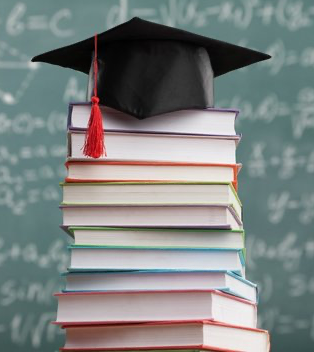As college application deadlines are coming around the corner, a large number of people are asking the same question.
How easy will it be to get into Ivy League schools this year?
For the first time in a long time, the odds might be in the class of 2026’s favor. Three major factors are at play: a decline in the number of international students, colleges and universities reverting to test-requirement policies, and the low birth rate numbers of 2007-2008.
✦✧✦✧✦
International Student Numbers Decrease
Currently, the average percentage of international students in Ivy League schools is about 25%, with Columbia University reaching up to 40% of international students as of fall 2025. They make up a large amount of every top college’s population, contributing to the diversity and global perspective of communities. Yet as much as the Ivies love to tout diversity and inclusivity in their marketing campaigns, the international population holds much more importance to them.
After the Trump administration made changes to the student visa policies, predictions estimate that there will be 30% to 40% fewer international students applying in the upcoming application cycle. This drop in numbers leaves many more seats open for students in United States high schools. However, while more seats are available for non-foreign students, these top colleges and universities are now losing a major source of funding because international students tend to pay full tuition. Given the growing importance of financial aid in education, the question of whether the Ivy Leagues will accept more people who can pay full tuition remains uncertain, but one thing’s for sure: with much fewer applicants to college, the acceptance rates will increase. As for if it’s a little or a lot, who’s to say?
Going Back to Test-Required
Due to the rise of COVID-19 in the early 2020s, many colleges and universities became test-optional in regards to standardized testing, including the Ivy League schools. This choice was made due to students having difficulty in finding test centers and dates that align with their schedules. The number of applications for these top schools began to increase by 20% to 40%, with tens of thousands of them flooding in. This rise of numbers lowered acceptance rates, making the schools seem even more selective than they already were.
However, in the upcoming application cycle, many Ivy Leagues have since dropped their test-optional requirement and have gone back to test-required. The only schools keeping their test-optional policies for this cycle are Princeton University and Columbia University (Still, Princeton’s going back next cycle). With this abrupt change, less people will have test scores that are looked at highly by these top colleges and universities. Less high school students will be applying, causing acceptance rates to increase.
Without a general and national way to analyze students, colleges under test-optional received way more applications than before, over exaggerating their numbers. Now, with most going back or projected to go back to required testing, these numbers will cease to be hyperbolized. Average scores will go down; acceptance rates will rocket.
Birth Rate Drops of 2007-2008
The Panic of 2008 was a major financial crisis in the United States that took place in both the years of 2007 and 2008. This crisis was caused by the large amount of home loans given by the bank to people who were not able to return the pay, causing the housing market to crash. This triggered the Great Recession, a period of time with major economic uncertainty and chaos.
The Great Recession sparked fear in many families, leading them to delay or get rid of any plans of having children. This plays a large role in the upcoming admissions cycle, as it is time for the children born during the recession to apply for college this fall and winter.
Due to the drop in birth rates, less people will be applying this year as compared to the previous years, giving students less competition when applying for any college or university, even the Ivy Leagues.
✦✧✦✧✦
Whether these three major changes will play a large effect on the upcoming admissions cycle still remains uncertain. One thing is certain: the Ivy Leagues will continue to be the most competitive and sought out institutions in the country.
The real question is: will you ignore these changes or will you take a leap of faith and apply?
Either way, the choice is yours.






